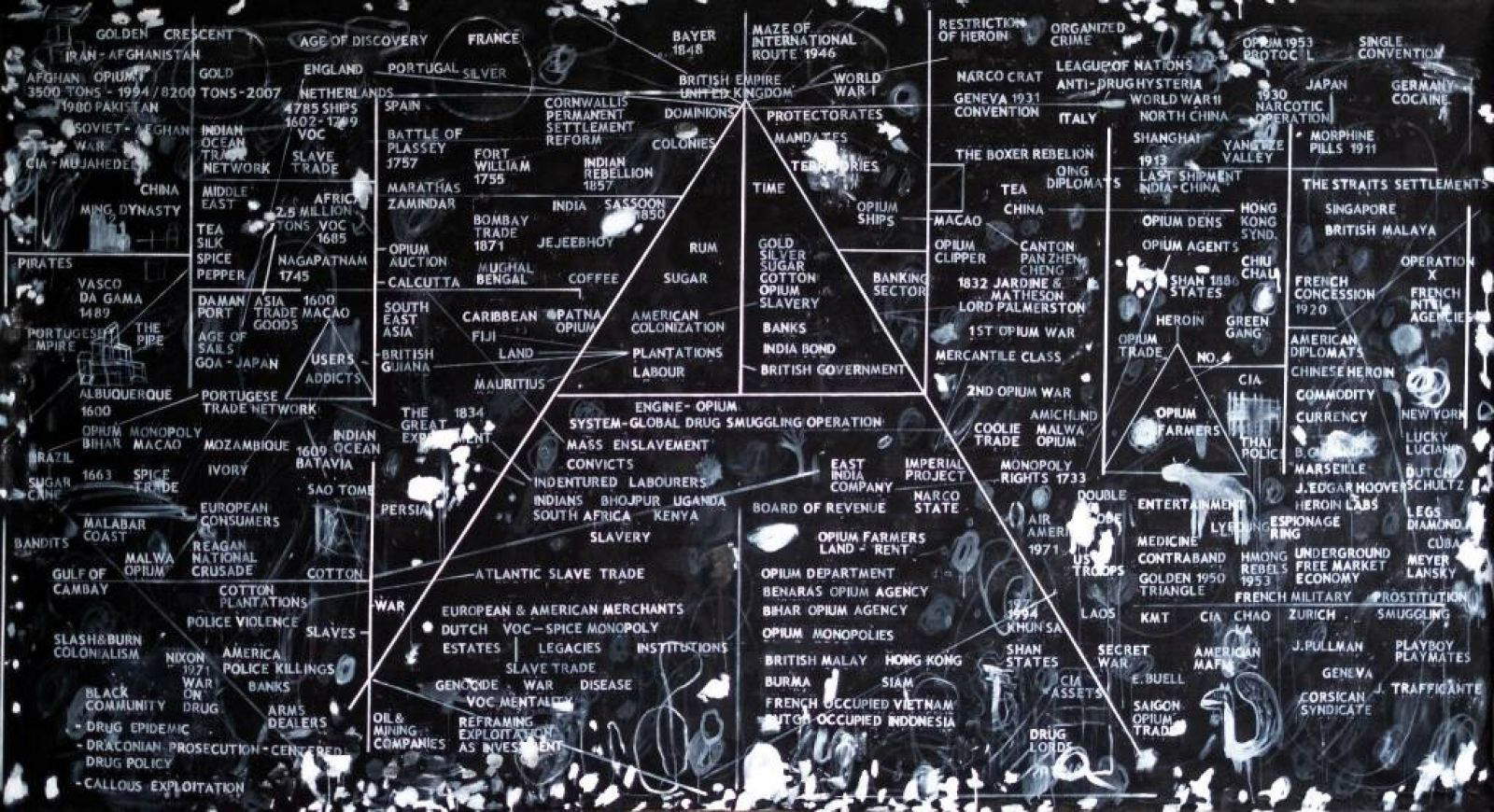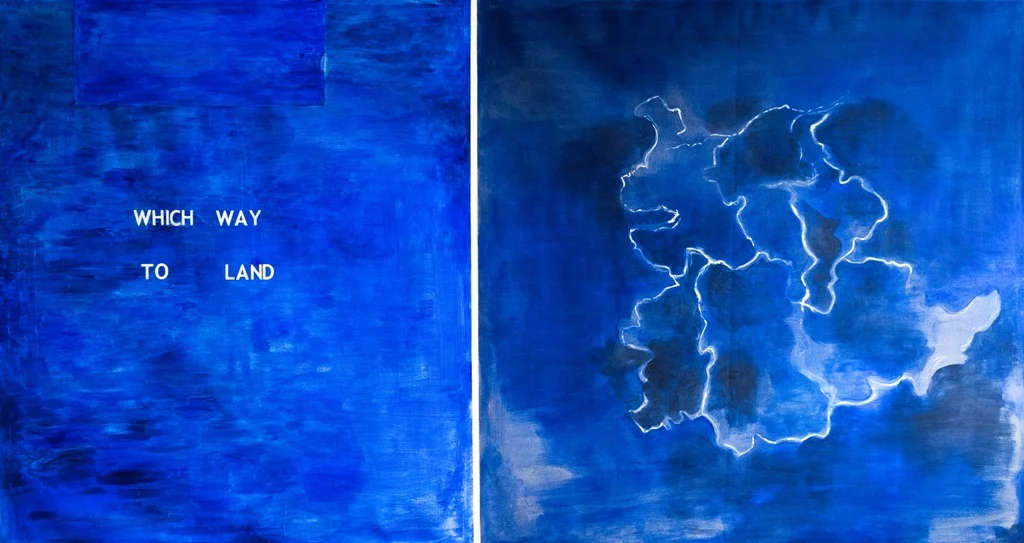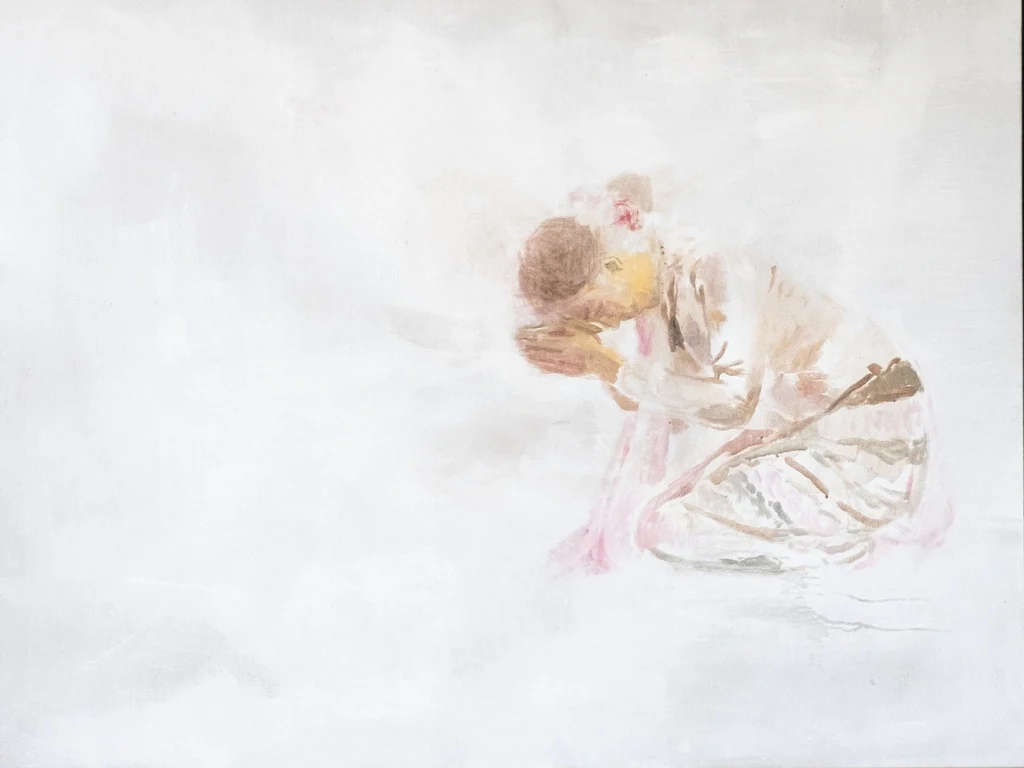The art of Sawangwongse Yawnghwe, Burmese artist in exile, is on display in Lucca
From September 21 to November 3, 2024, the Fondazione Ragghianti in Lucca is hosting the exhibition Burma. The Art of Sawangwongse Yawnghwe between Burma and Europe, a solo exhibition of Burmese artist Sawangwongse Yawnghwe, known as Sawang. The exhibition, curated by Max Seidel and Serena Calamai and realized with the support of the Fondazione Cassa di Risparmio di Lucca and the partnership of the Kunsthistorisches Institut of Florence, features more than sixty works by the Burmese artist: his creations reflect the complexity of a country, Myanmar (formerly known as Burma), torn apart by conflict, recounting the Burmese drama with an artistic language that dialogues with the history and culture of Europe.
Sawang depicts the tragedies that have marked Burma in recent decades with a highly symbolic vision, often inspired by the etchings of Francisco Goya. His works do not simply document the conflict between democracy and tyranny that has plagued the country for more than half a century, but are intended to viscerally express the suffering of an oppressed people. Born in a rebel-controlled area in Shan State, Sawang brings to his canvases the experiences of his own family: his grandfather, Sao Shwe Thaik, was Burma’s first president after British independence but was killed in the 1962 military coup. His father and grandmother, in response, founded a resistance movement. Sawang, who grew up in exile, has lived between Thailand, Canada and the Netherlands, where he now resides.
As Max Seidel, co-curator of the exhibition with Serena Calamai, states, his meeting with Sawang “took place in Tuscany shortly after the Saffron Revolution of 2007, and as a result of those conversations the artist created a series of drawings referring to the repression of Buddhist monks by the brutal armed force of military junta soldiers. Even in his early graphic works, Sawang chose to represent the war in Burma through symbolic imagery, eschewing a mere chronicling of events.”
“We are pleased to announce the opening of a new exhibition in September, the third this intense year at the Fondazione Ragghianti, dedicated to an artist whose production takes on universal contours in light of the current historical context,” says Paolo Bolpagni, director of the Fondazione Ragghianti. “Lucca, a city-symbol of a centuries-old struggle for its own freedom, appears to be an ideal place to host this exhibition, which confirms an ongoing commitment to promoting artists and themes worthy of investigation, offering the public a stimulating and meaningful cultural experience.”
Opening hours: Tuesday through Sunday from 10 a.m. to 6 p.m. Admission ticket: 5 euros. Reduced ticket: 3 euros (for Artsupp Card holders; holders of the cumulative ticket of the Museum and Archaeological Complex of the Cathedral of Lucca; groups of more than fifteen; under eighteen; students of universities, art academies and conservatories provided with badges; military and law enforcement with badges). Free ticket for children up to six years of age; disabled persons (and accompanying person); one accompanying person for each group; students from Tuscan universities provided with a card; school groups (primary and secondary); employees and members of the institutional bodies of the Fondazione Cassa di Risparmio di Lucca and their families; teachers; ICOM members; journalists and tour guides with a card. Info: www.fondazioneragghianti.it - info@fondazioneragghianti.it - tel. +39 0583 467205


The exhibition.
Through the filter of art, Sawang translates the Burmese drama into universal symbols: Buddhist monks raising their hands in prayer, in peaceful opposition to the dictatorship, set against the brutality of the military junta. One of the most significant works in the exhibition is Parallax of the play of opposing forces, which explores the complex intersection of politics, international finance and drug trafficking that continues to shape Burmese reality.
Sawang’s canvases recall key historical events, such as the 2007 Saffron Revolution, when Buddhist monks demonstrated against the regime. His art thus becomes a means to reflect on the human condition, transforming violence and oppression into a visual language of resistance.
The artist also devotes space to crucial figures in recent Burmese history, such as Nobel Peace Prize winner Aung San Suu Kyi, depicted in an attitude of Buddhist humility and prayer, contrasting with the brutality of figures such as General Min Aung Hlaing, depicted as a worshipper of the demons of tyranny. Burma’s lost golden age emerges through melancholy and nostalgic figures, evoking a glorious and irretrievable past. Two series of paintings delve into the imprisonment of Aung San Suu Kyi and the hope for the fall of the military regime, with evocative images in which Sawang shows the general, walking on a thin wire, is destined to plunge into darkness. One of the central questions the artist asks visitors is painted in a large canvas depicting the geography of Burma: Which way to land? (“Which way to land?”), an existential question that expresses the uncertainty and hope of the Burmese people.
In addition to focusing on his homeland, Sawang does not lose sight of the dialogue with European culture. A significant part of the exhibition is devoted to works inspired by Honoré de Balzac’s Le Chef-d’œuvre inconnu . The short story, published in 1831, explores the relationship between art and reality and the artist’s obsession with perfection, themes that Sawang takes up with intensity. In particular, the Burmese artist reflects on the risk of the artist’s self-destruction in pursuit of the absolute, a theme that had already fascinated Pablo Picasso, who illustrated a version of the tale in 1931. Sawang’s technique, which employs copper paint to depict the process of figure dissolution, evokes the theme of the destruction of image and reality. His delicate and meticulous stroke, together with the oxidation of pigments, creates an effect of dissolution that goes beyond simple mimesis, paving the way for deep reflection on artistic representation and its meaning.
The exhibition also includes works inspired by Émile Zola’s L’Œuvre, the novel about the troubled life of painter Claude Lantier, whose desire to create a new art form isolates him from the world and leads him to a tragic fate. Sawang depicts this conflict with a series of paintings that explore the separation between personal life and artistic creation. The artist paints the protagonist’s wife, Christine, abandoned among the banks of a Parisian river, while Claude isolates himself in his dark atelier to pursue his artistic dream. His obsession culminates in a dramatic final scene in which the artist commits suicide in front of his unfinished beauté géante, in a mystical vision of artistic creation as an act of life and death.


Sawang: an international voice for art in exile
Sawangwongse Yawnghwe, born in 1971, is descended from the royal family of Shan and grew up in exile after the coup that overthrew Burma’s democratic government. His personal and family experiences are inextricably linked to his art, which finds expression in his paintings, exhibited internationally in galleries in Taiwan, New York, Berlin and Jerusalem.
Using evocative and symbolic language, Sawang aims to transform the trauma of his personal history into universal art, capable of touching on themes such as oppression, exile and the search for absolute beauty. The exhibition at the Fondazione Ragghianti thus offers an opportunity to get closer to an artist who, through her global vision, intends to represent the tragedies and hopes of an entire people.
 |
| The art of Sawangwongse Yawnghwe, Burmese artist in exile, is on display in Lucca |
Warning: the translation into English of the original Italian article was created using automatic tools. We undertake to review all articles, but we do not guarantee the total absence of inaccuracies in the translation due to the program. You can find the original by clicking on the ITA button. If you find any mistake,please contact us.




























